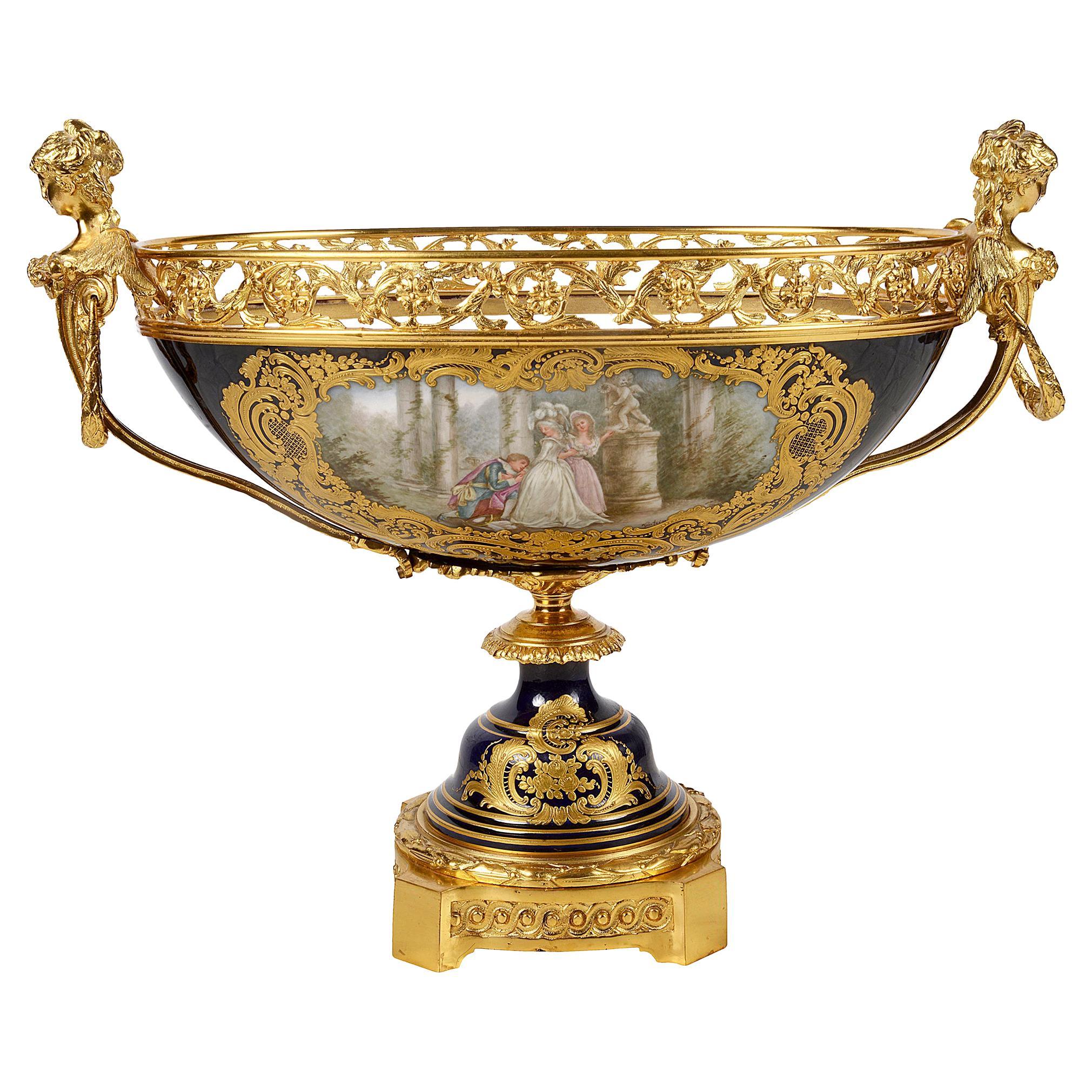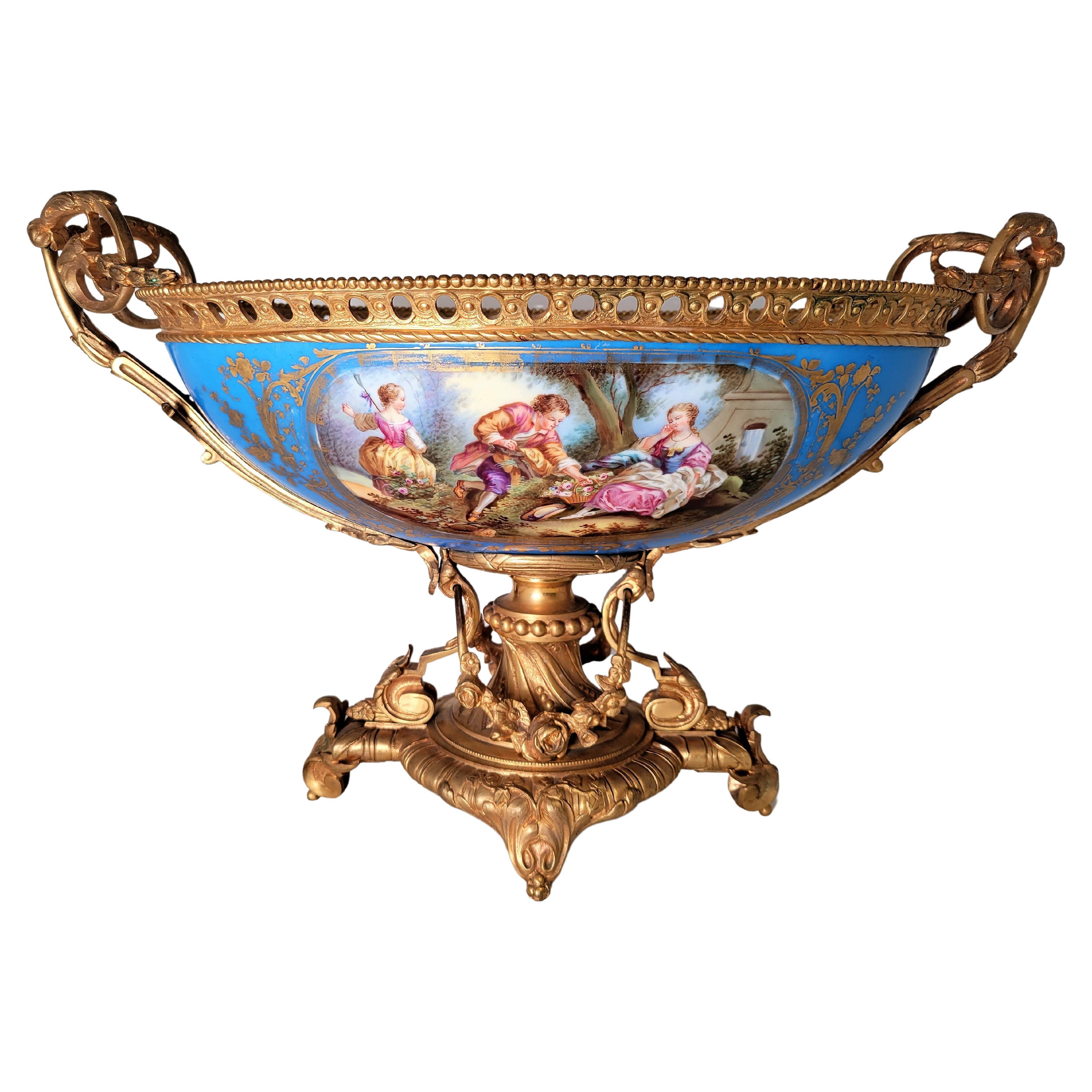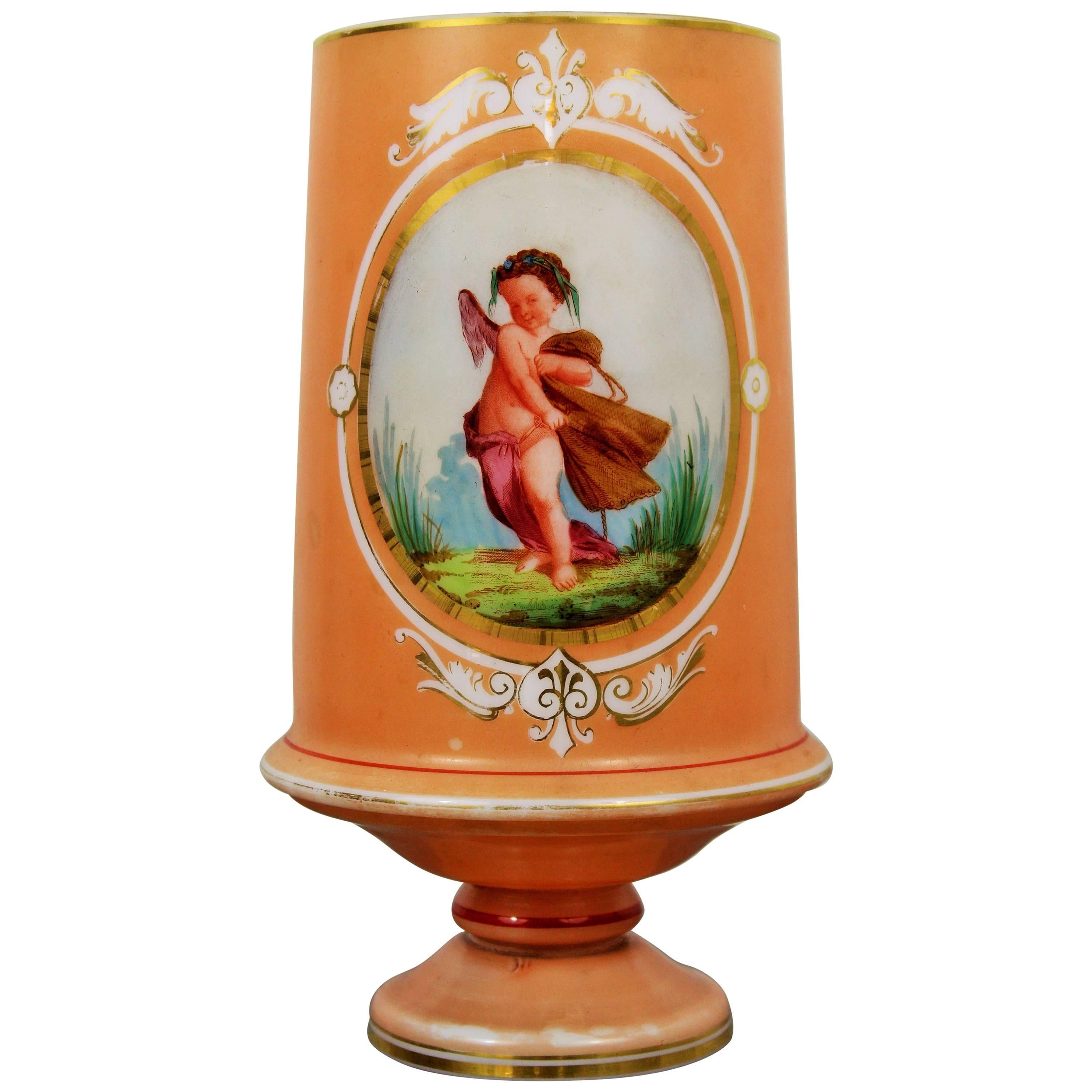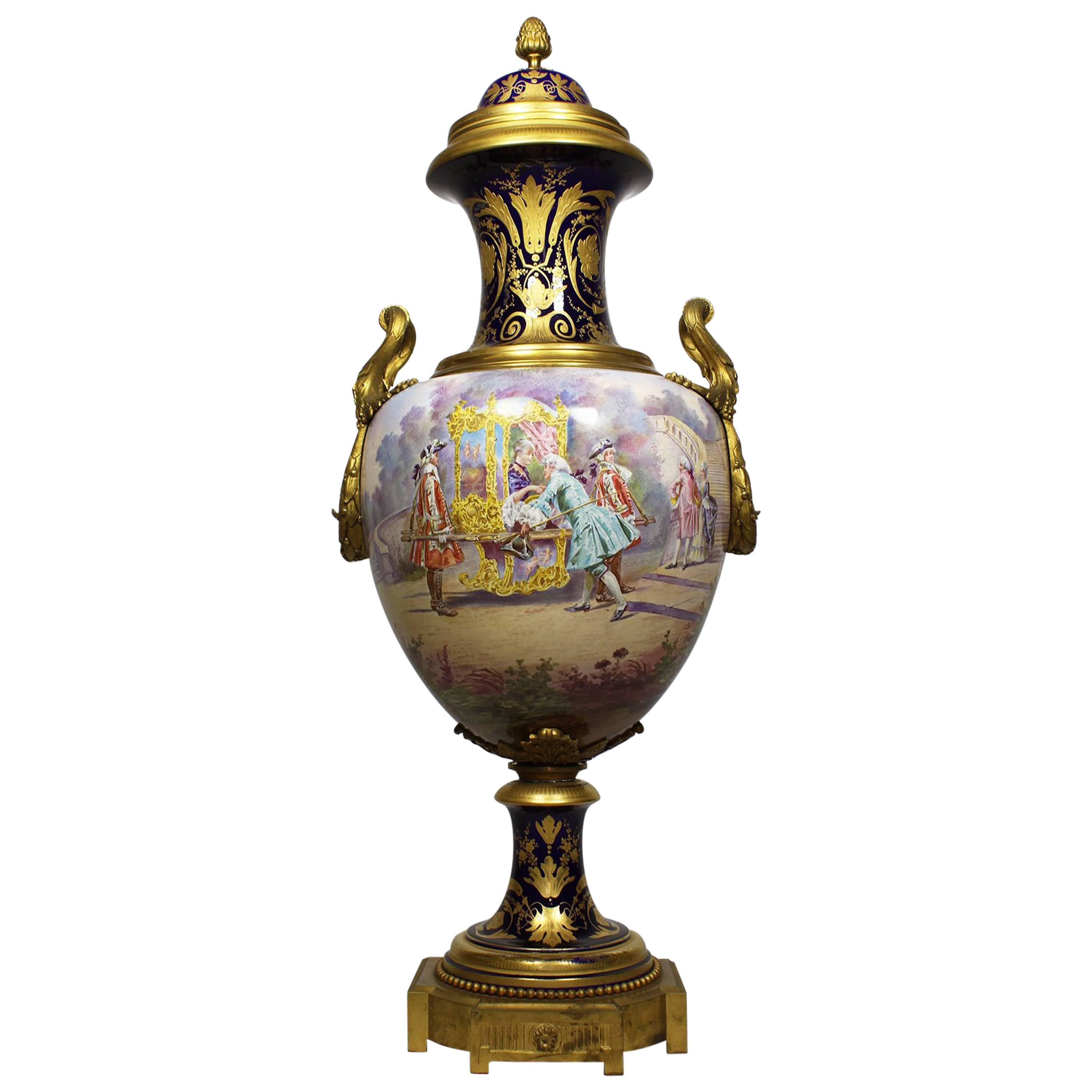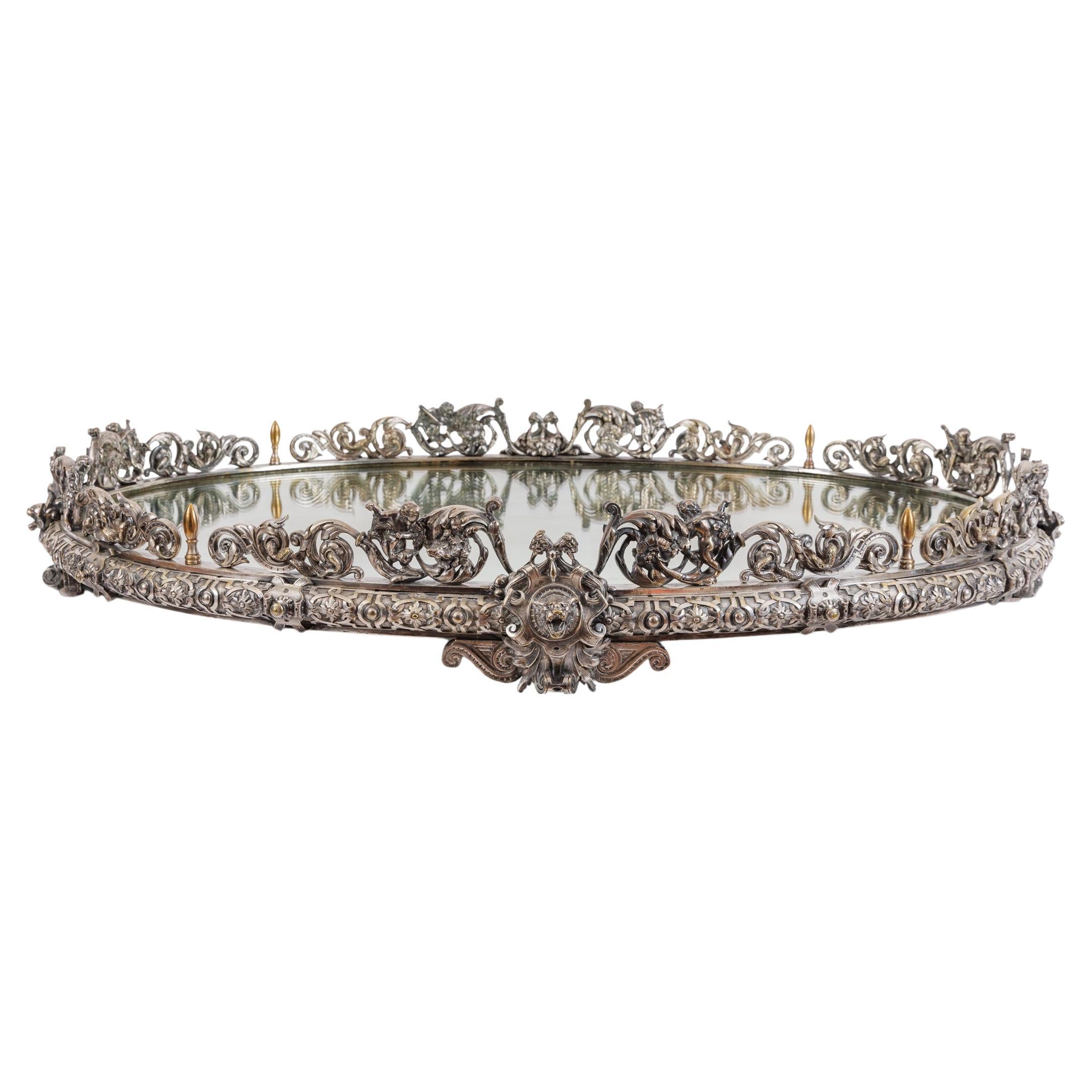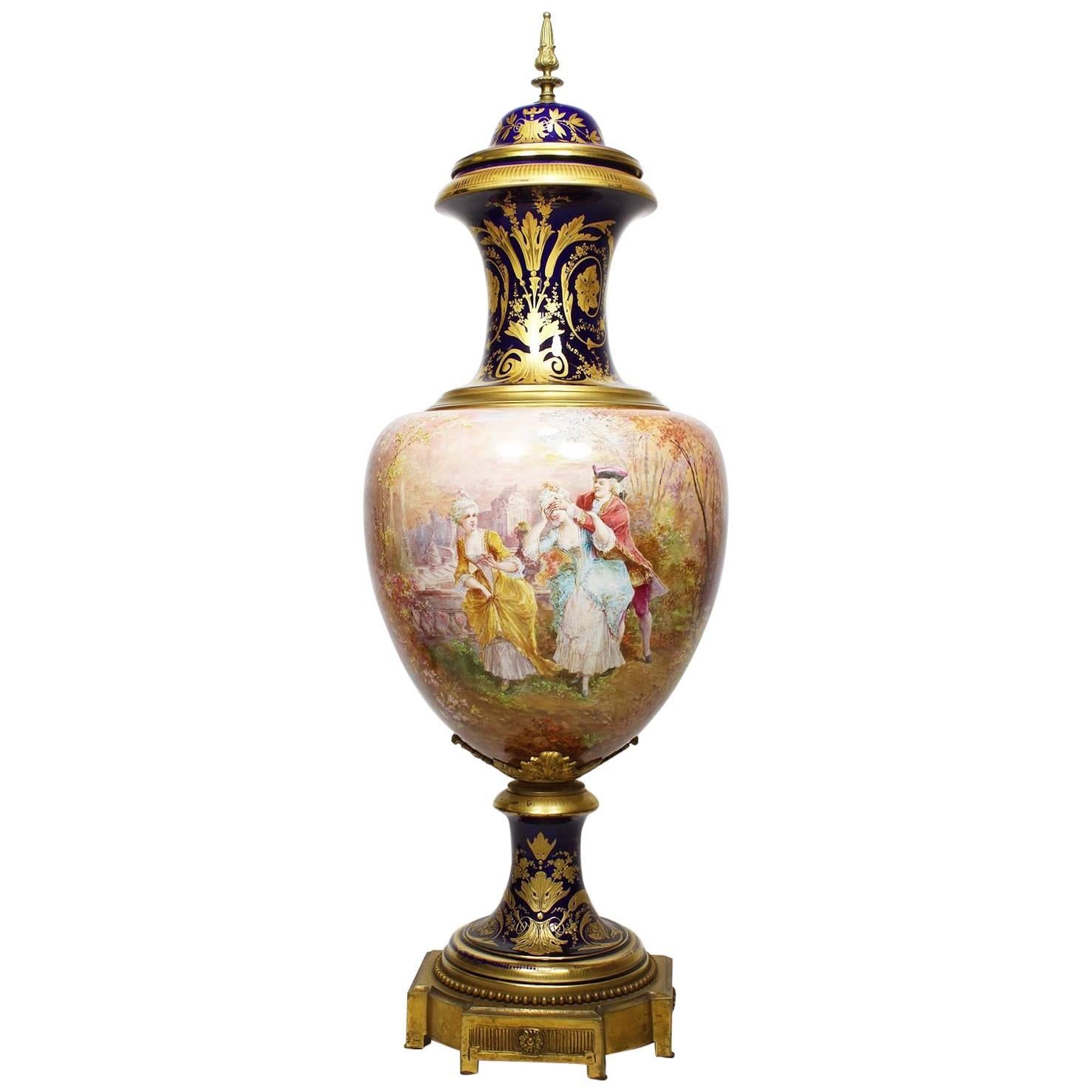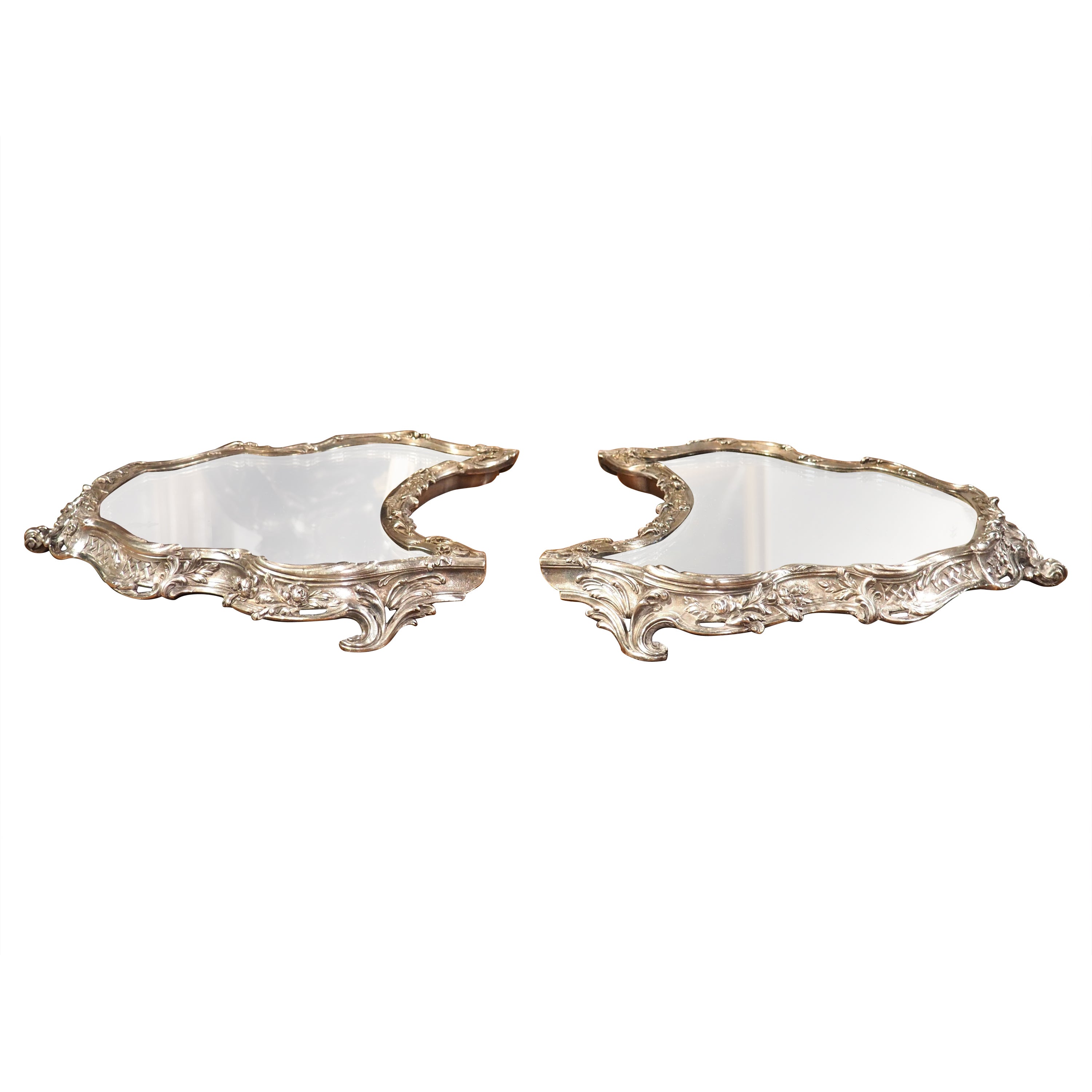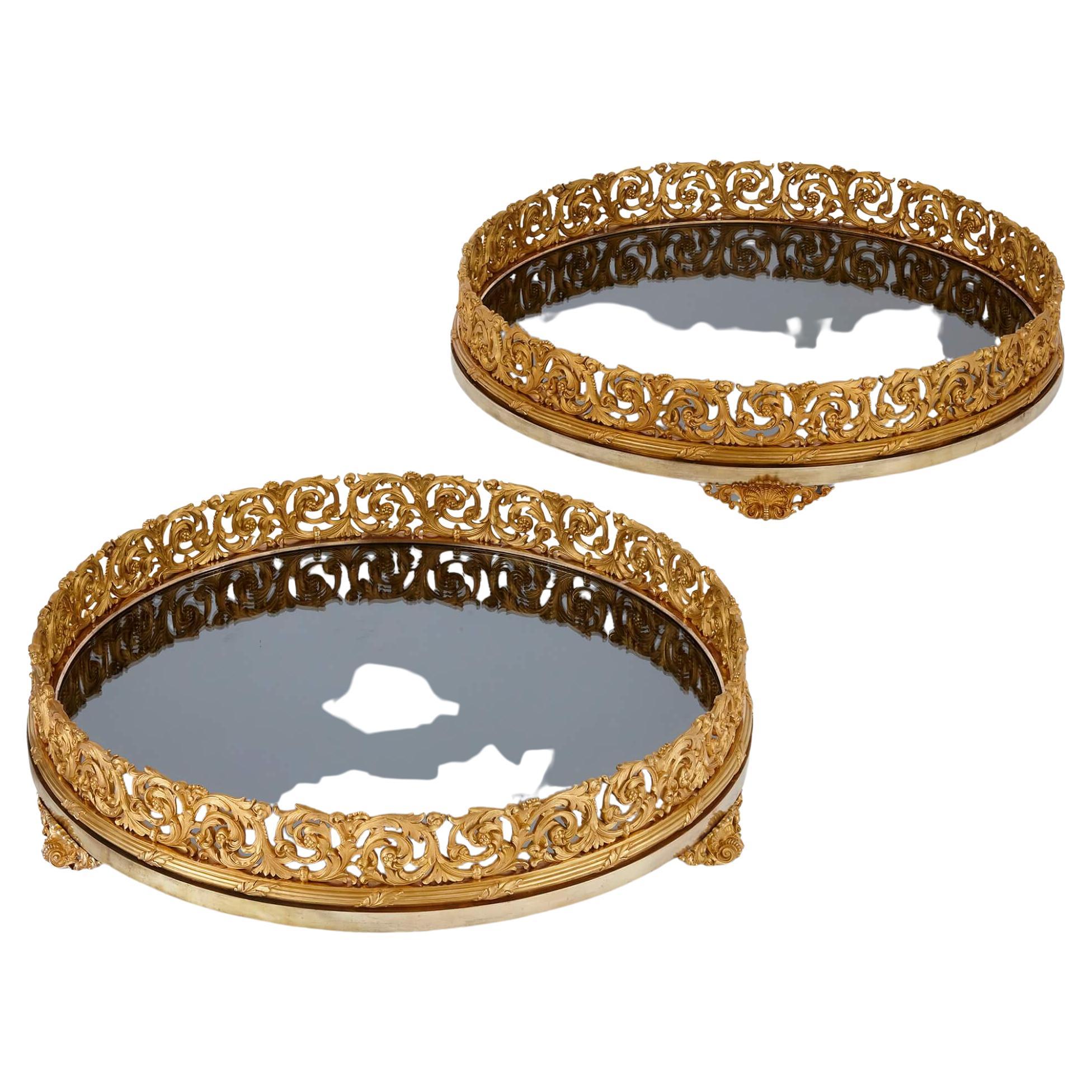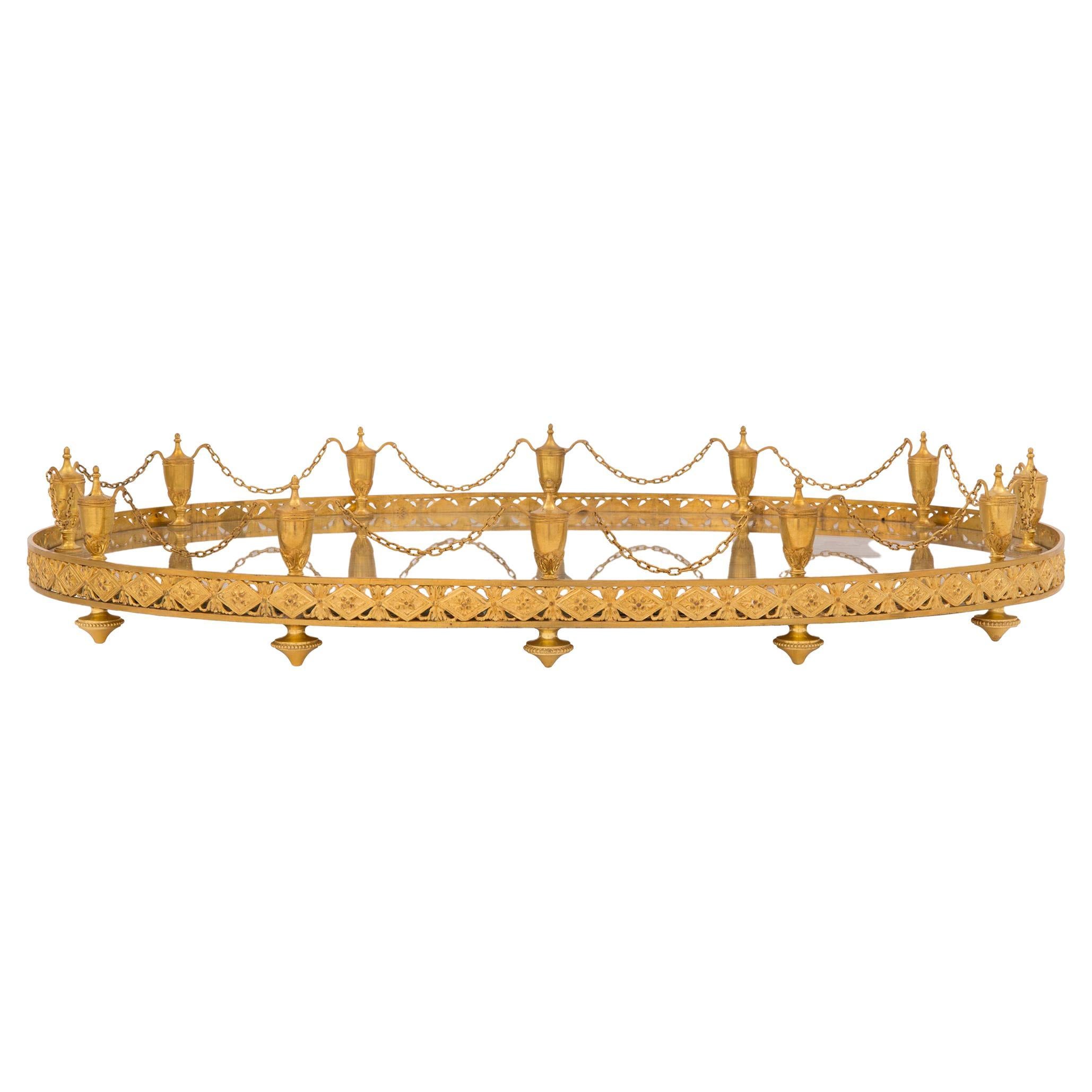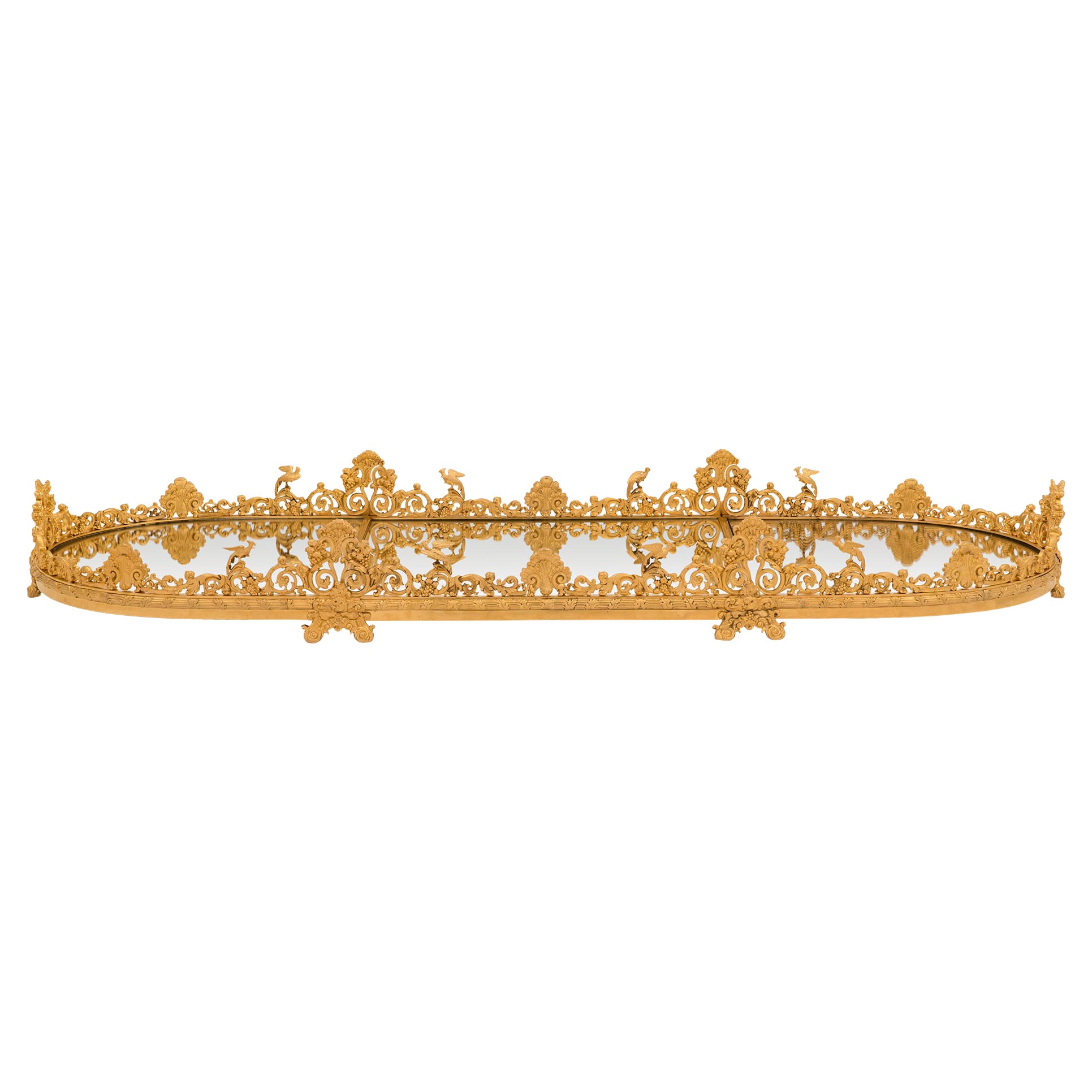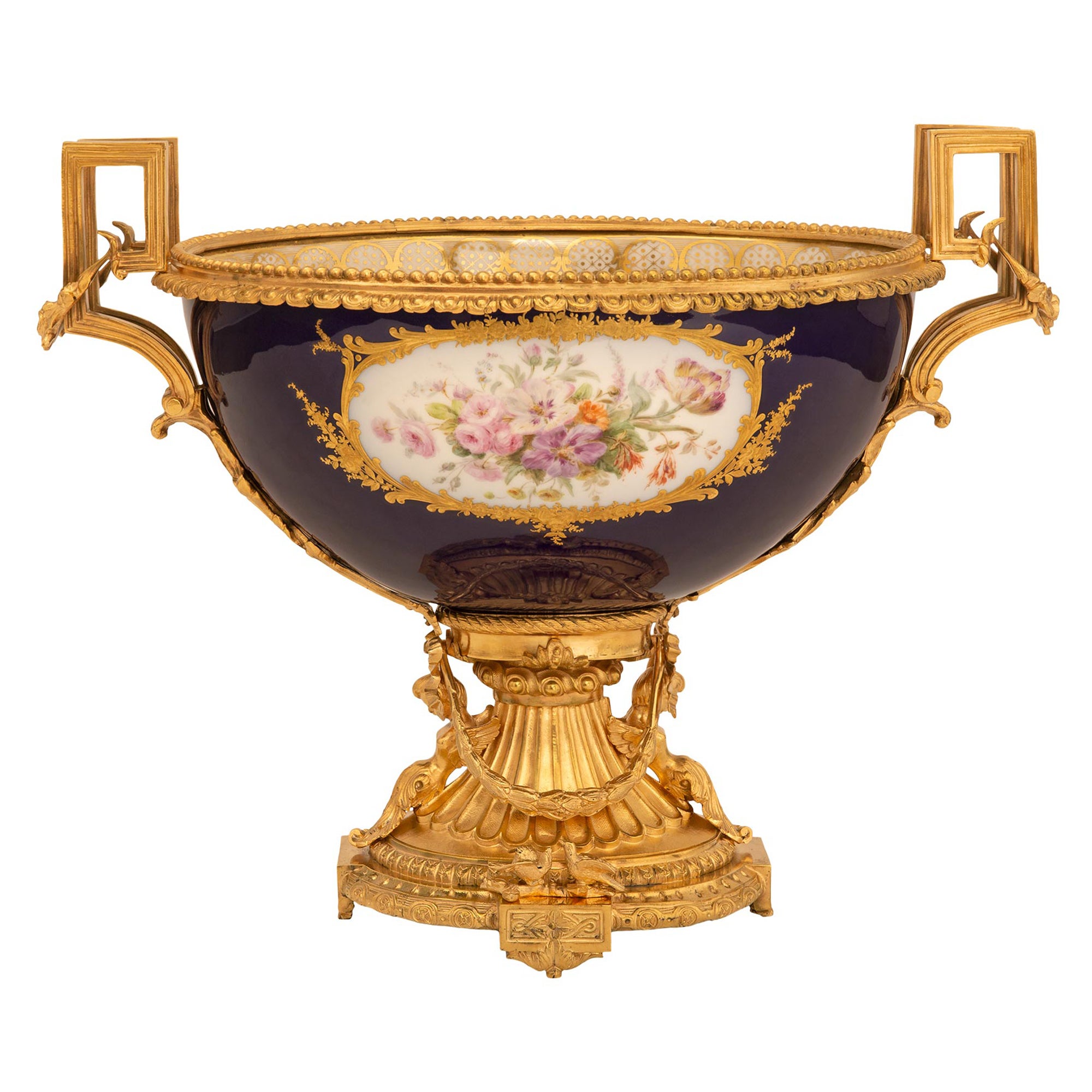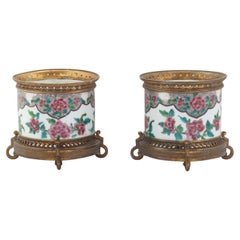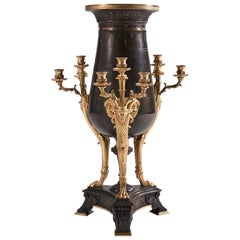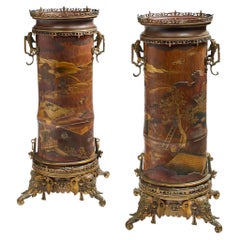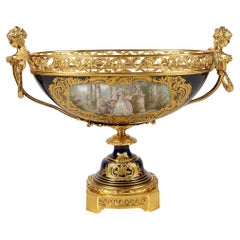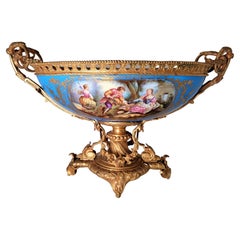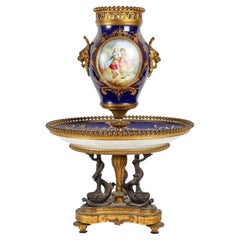
A 19th Century French Napoléon III Sèvres Porcelain Surtout de Table
View Similar Items
Want more images or videos?
Request additional images or videos from the seller
1 of 10
A 19th Century French Napoléon III Sèvres Porcelain Surtout de Table
About the Item
- Similar to:Manufacture Nationale de Sèvres (Manufacturer)
- Dimensions:Height: 21.26 in (54 cm)Diameter: 14.18 in (36 cm)
- Style:Napoleon III (Of the Period)
- Materials and Techniques:
- Place of Origin:
- Period:
- Date of Manufacture:circa 1880
- Condition:Wear consistent with age and use.
- Seller Location:Saint-Ouen, FR
- Reference Number:1stDibs: LU2612335361002
About the Seller
4.9
Vetted Seller
These experienced sellers undergo a comprehensive evaluation by our team of in-house experts.
1stDibs seller since 2017
56 sales on 1stDibs
Typical response time: 1 hour
More From This SellerView All
- French 19th Century Pair of Porcelain Cache-PotsLocated in Saint-Ouen, FRPair of polychromed hand painted porcelain with Japonisme floral decoration Ormolu-mounted with open-worked base and rim Louis XVI Style circa 1880.Category
Antique 1870s French Chinoiserie Planters, Cachepots and Jardinières
MaterialsOrmolu
$1,921 Sale Price / set20% Off - Impressive French 19th Century Neo-Greek Style Bronze Nine-Lights CenterpieceBy Georges Emile Henri ServantLocated in Saint-Ouen, FRAn impressive French 19th century Neo-Greek style bronze nine-lights center piece In patinated and gilt bronze, engraved on the body of foliage and rings, the collar decorated with a frieze of palms in bas-relief. It is held by a tripod base decorated with shards, foliage, and fins, in the center a mask of man. Surmounted by three arms, nine-lights ending in lion’s paw. Curved triangular base with ivy friezes, and palm-leaf feet. Attributed to Georges Emile Henri...Category
Antique 1860s French Napoleon III Vases
MaterialsBronze
- French 19th Century Pair of Lacquered Bamboos Japonisme VasesBy Edouard Lievre, Ferdinand BarbedienneLocated in Saint-Ouen, FRA 19th French century pair of Lacquered Bamboos Japonisme vases. An amazing pair of tall cylindrical bamboo vases decorated in Japanese Gold and Sil-ver Hiramaki-E Lacquer with Pavilions in The Mist and Weaving Figures, Flown Over by a Pair of Cranes. Enclosed in a Sino-Japanese Inspiration Golden and Brown Patina Bronze Mount Featuring Elephant Heads, Partially Openwork Branches and Salamanders Forming Side Handles. Circa 1870 Attributed to Édouard Lièvre (1828-1886) and Ferdinand Barbedienne (1810-1892) Édouard Lièvre (1828-1886) is one of the most talented and prolific designer and industrialist of the 19th Century, his repertoire is sometimes Sino-Japanese or Neo-Renaissance, whether in furniture or works of art, we can note in particular the parade bed of Valtesse de La Bigne, furniture commissioned by the painter Édouard Detaille or even Sarah Bernhardt, and the famous works in collaboration with Maison Christofle or those in gilded bronze and cloisonné enamel edited by Ferdinand Barbedienne, presented at the Universal Exhibitions in 1878, 1889 and 1900. He was both a draftsman, painter, illustrator, engraver, ornamentalist and cabinetmaker, first trained in the studio of the painter Thomas Couture, Lièvre was then fully immersed in the world of decoration, creation and ornamentation and provides designs for manufacturers and merchant-publishers. Often assisted by his brother Justin, he first produced works of art for his own apartment, seeking out the finest craftsmen to execute his designs for bronzes, ceramics, fabrics and luxury furniture from great virtuosity and great taste. He then collaborated with the cabinet-maker Paul Sormani, as well as haberdasher merchants such as the Escalier de Cristal, bronziers such as Maison Marnyhac and especially Ferdinand Barbedienne as on our vases with bronze mounts characteristics of Edouard Lièvre's work. Born in 1810, died in Paris in 1892, Ferdinand Barbedienne, the most important caster of bronze pieces of art during the second half of the 19th Century, created and directed in Par-is one of the major artistic foundries of his time. Barbedienne specialized in classical reproductions, whose models were exposed in famous European museums. Their illustrated catalogues included many diverse objects such as busts, ornemental sculpture (clocks, candelabras, cups) sometimes even life-sized and bronzes for furniture. Apart from his own produc-tion, Barbedienne worked for the most renowned sculptors such as Barrias, Clésinger and Carrier-Belleuse. All his works were highly esteemed and he, himself honored by contemporary critics. At the London exhibition in 1851 Barbedienne’s firm won two « Council medals ». At the 1855 Universal Exhibition, he won a medal of honor. The success of Barbedienne’s firm brought him many official commissions, such in about 1860, as Barbedienne supplied bronzes for furniture for the Pompeian Villa of Prince Napoléon-Joseph, located avenue Montaigne in Paris. At the London Universal Exhibition of 1862 Barbedienne won medals in three different categories: Furniture, Silversmith work and Artistic bronzes. Barbedienne was made an officer of the Légion d’Honneur in 1867 and Commander in 1878 when he was compared with « a prince of industry and the king of bronze casting ». His glory did not decline with the passage of the time for at the Universal Exhibition of 1889 the critics thanked Barbedienne for the example he set for other bronze-casters by the perfection of his bronzes. “Japonisme” in the second half of the 19th century, was a craze for everything that came from Japan or imitated its style. The word was first coined in a series of articles published by Philippe Burty, from May 1872 to February 1873, in the French magazine “la Renaissance Littéraire et Artistique”. Far from the Academic sphere, artists seeking for new ways of expression, appropriated this discovery. Manet and the impressionists led the way to half a century of enthusiasm for Japanese art, and largely contributed to the esthetical revolution Europe experienced between 1860 and the beginning of the twentieth century. From 1862, The World’s Fairs provoked massive arrivals of fans, kimonos, lacquers, bronzes, silks, prints and books that launched the real era of Japonisme. With those exhibitions, the demand was boosted, the number of merchants and collectors was multiplied, and artists became passionate about this new esthetic. For them, its “primitivism” was probably its most important quality: artists were fond of the Japanese art’s capacity to be close to nature and to reconcile art and society by representing, with a lot of care, the most trivial objects. In painting, Edouard Manet, Mary Cassatt, Degas, Van Gogh, Gauguin were among those who were deeply inspired by Japanese art, affected by the lack of perspective and shadow, the flat areas of strong color, the compositional freedom in placing the subject off-center, with mostly low diagonal axes to the background. The Japanese iris, peonies, bamboos, kimonos, calligraphy, fish, butterflies and other insects, the blackbirds, cranes and wading birds, the cats, tigers, and dragons were endless sources of inspiration, appropriation, and reinterpretation for European artists. The occidental productions were combining styles and artistic conceptions instead of copying Japanese art slavishly. That is what brings to light the comparison between the artworks of Kitagawa Utamaro and Degas, of Katsushika Hokusai and Van Gogh The World’s Fairs of 1851 and 1862 in London, those of 1867, 1878, 1889 and 1900 in Paris, of 1873 in Vienna and of 1904 in Saint Louis presented a number of “Japanese-Chinese” installations with earthenware, bronzes, screens and paintings and attracted the largest amounts of visitors In Vienna, the “Japanese village...Category
Antique 1870s French Japonisme Vases
MaterialsBronze
$42,250 Sale Price / set35% Off - French 19th Century Neogothic InkwellLocated in Saint-Ouen, FRDiana the Huntress A Louis Philippe Neo-Gothic Style Ormolu Inkwell Rectangular in brown patina bronze and gilt bronze. The tier presents in its center a statuette of Diana the ...Category
Antique 1850s French Napoleon III Inkwells
MaterialsBronze, Ormolu
- Pair of French Napoléon III Curule ArmchairsLocated in Saint-Ouen, FRPair of French Napoléon III Curule Armchairs Moulded, carved, blackened wood, enhanced with gold. Open-banded back decorated with interlacing, X-bas...Category
Antique 1890s French Napoleon III Armchairs
MaterialsWood, Trimming
$3,144 Sale Price / set40% Off - 19th Century French Lacquered Wood ChandelierLocated in Saint-Ouen, FRA 19th century French polychromed lacquered wood eight-light chandelier Lacquered gloss cream wood with green, red and brown highlights Contained vase ending in foliated seed welcoming eight arms forming semicircles. The top has a frieze of red flowers in green interlacing and is topped with leaves and a painted egg cream...Category
Antique 1890s French Louis XVI Chandeliers and Pendants
MaterialsWood
$5,732 Sale Price30% Off
You May Also Like
- Large 19th Century Sevres Style ComportBy Manufacture Nationale de SèvresLocated in Brighton, SussexA very impressive, good quality late 19th century French Sevres style porcelain comport. Having wonderful twin gilded ormolu monopodia handles, a pierced scrolling foliate gallery. C...Category
Antique Late 19th Century French Urns
MaterialsOrmolu
- Antique French 19th Century Napoleon III Sevres CenterpieceLocated in New Orleans, LAThis centerpiece is very beautiful. One side has floral decorative elements and the other, a gentleman bringing a posy of flowers to a lady seated on the ground, while another watche...Category
Antique Late 19th Century French Centerpieces
MaterialsOrmolu
- Orange Opaline vase with Cherub Decor - Napoleon III 19th - FranceLocated in Beuzevillette, FRCharming vase on foot in opaline glass, painted and gilded. A medallion is drawn in which is represented a cherub wearing a sheet. The pattern is very fine and delicate. For an elega...Category
Antique 19th Century French Napoleon III Vases
MaterialsOpaline Glass
$454 Sale Price20% Off - French 19th Century Louis XVI St. Biscuit De Sèvres Porcelain CenterpieceBy Manufacture Nationale de SèvresLocated in West Palm Beach, FLA stunning and wonderfully executed French 19th century Louis XVI st. Biscuit de Sèvres porcelain centerpiece. The most elegant centerpiece...Category
Antique 19th Century French Louis XVI Centerpieces
MaterialsPorcelain
- French 19th Century Napoleon III Sévres Style Porcelain and Ormolu Mounted UrnBy Manufacture Nationale de SèvresLocated in Los Angeles, CAA very fine French 19th Century Napoleon III Sévres Style Porcelain and Ormolu Mounted Covered Urn, the 360 degree painted urn centered with an 18th century scene of a young Princess...Category
Antique 19th Century French Louis XV Porcelain
MaterialsOrmolu
$9,850 Sale Price47% Off - A Massive Napoleon III French Silvered Bronze Mirrored Surtout De Table PlateauLocated in New York, NYA Massive Napoleon III French Silvered Bronze Mirrored Surtout De Table Plateau, circa 1870 Immerse yourself in the intricate world of cherub...Category
Antique 19th Century French Napoleon III Centerpieces
MaterialsBronze
Recently Viewed
View AllMore Ways To Browse
Modern Surtout De Table
Opaline Epergne
Used Cake Plateau
Gold Cook Medallion
Merman Centerpiece
Reaction Poetique
Wedgwood Whitehall
Antique Flower Shop Sign
Vintage French Hotel Silver
Crystal Bronze Centerpiece
Long Table Centerpiece
Blue And Green Glass Centerpiece
Dolphin Base Glass Dining
E Martinelli
Solid Silver Centrepieces
Loewe 2019
19th Century Silver Italy
Vintage Travel Art Italy
